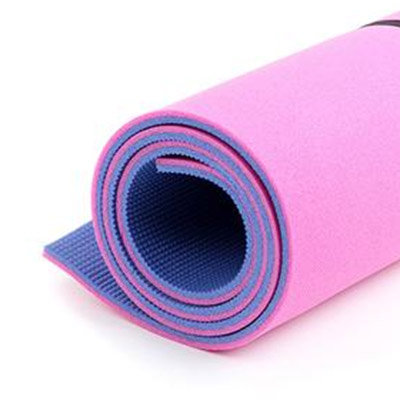
-
 Afrikaans
Afrikaans -
 Arabic
Arabic -
 Belarusian
Belarusian -
 Bengali
Bengali -
 Bulgarian
Bulgarian -
 Croatian
Croatian -
 Czech
Czech -
 Danish
Danish -
 Dutch
Dutch -
 English
English -
 Finnish
Finnish -
 French
French -
 German
German -
 Greek
Greek -
 hawaiian
hawaiian -
 Hebrew
Hebrew -
 Hindi
Hindi -
 Hungarian
Hungarian -
 Indonesian
Indonesian -
 irish
irish -
 Italian
Italian -
 Japanese
Japanese -
 Javanese
Javanese -
 kazakh
kazakh -
 Khmer
Khmer -
 Korean
Korean -
 Kyrgyz
Kyrgyz -
 Lao
Lao -
 Latin
Latin -
 Luxembourgish
Luxembourgish -
 Malay
Malay -
 Myanmar
Myanmar -
 Norwegian
Norwegian -
 Persian
Persian -
 Polish
Polish -
 Portuguese
Portuguese -
 Romanian
Romanian -
 Russian
Russian -
 Serbian
Serbian -
 Slovak
Slovak -
 Somali
Somali -
 Spanish
Spanish -
 Swedish
Swedish -
 Tagalog
Tagalog -
 Thai
Thai -
 Turkish
Turkish -
 Turkmen
Turkmen -
 Ukrainian
Ukrainian -
 Uighur
Uighur -
 Vietnamese
Vietnamese
Nov . 03, 2024 07:33 Back to list
how to select a mountain bike
How to Select a Mountain Bike A Comprehensive Guide
Choosing the right mountain bike can significantly enhance your riding experience, whether you're a beginner venturing into off-road trails or an experienced rider looking for a new challenge. With a plethora of options available on the market, it’s vital to consider a few key factors to ensure you make the best choice for your needs. Here are some important aspects to consider when selecting a mountain bike.
1. Determine Your Riding Style
Before diving into technical specifications, identify your riding style. Mountain biking can encompass various disciplines, including cross-country, trail, enduro, and downhill. Cross-country bikes are lightweight and built for speed on paved or slightly rugged tracks. Trail bikes offer a balance between climbing and descending capabilities. Enduro bikes are designed for aggressive riding with a focus on descending, while downhill bikes prioritize stability and control on steep terrains. Knowing how you intend to ride can guide you toward the right bike type.
Mountain bikes typically come in three common frame materials aluminum, carbon fiber, and steel. Aluminum frames are known for being lightweight and affordable, making them a great choice for beginners. Carbon fiber frames are lighter and more durable but come at a premium price. Steel frames, although heavier, provide excellent durability and a comfortable ride due to their natural flex. Assess your budget and how much weight you’re willing to carry to determine the best material for your needs.
3. Wheel Size
Mountain bikes generally come with three wheel sizes 26”, 27.5”, and 29”. A 26” wheel is more agile and easier to maneuver, suitable for tight trails. The 27.5” wheel strikes a balance between speed and stability, making it versatile for various terrains. The 29” wheel rolls over obstacles more smoothly and provides better traction, making it ideal for cross-country and trail riding. Your choice should reflect the type of terrain you'll be riding on and your comfort level.
how to select a mountain bike

4. Suspension
Mountain bikes come with three types of suspension hardtail, full-suspension, and rigid. Hardtail bikes have a front suspension but no rear suspension, making them more efficient for climbing and lighter overall. Full-suspension bikes, which have both front and rear suspension, provide a more comfortable ride on rough terrain, absorbing impacts and improving control. Rigid bikes lack suspension altogether, offering a more direct connection to the trail. Your preference must align with the type of trails you plan to tackle.
5. Fit and Comfort
Ensuring that your mountain bike fits properly is crucial for both performance and comfort. Ride the bike before purchasing to evaluate how it feels. Pay attention to the frame size; a bike that is too large or too small will hinder your performance and may lead to discomfort or injury. Adjust the seat height and test the bike's handling to ensure it meets your comfort needs.
6. Budget
Lastly, set a budget before starting your search. Mountain bikes can range from a few hundred to several thousand dollars. While it can be tempting to opt for a cheaper model, investing in a quality bike can enhance your riding experience and longevity in the sport.
In conclusion, selecting the right mountain bike requires careful consideration of your riding style, frame material, wheel size, suspension type, fit, and budget. By evaluating these factors, you can make an informed decision that will not only elevate your biking experience but also ensure you have fun and stay safe on the trails. Happy riding!
-
New Red Anti-theft E-Bike | Easy Ride City Commuter
NewsJul.31,2025
-
BMX 20 Inch Bikes for Freestyle & Street | Fat Tire Options Available
NewsJul.30,2025
-
322 High Quality 26 Inch 21 Speed Adult Mountain Bike OEM MTB
NewsJul.29,2025
-
Specialized Kids Mountain Bikes - Safe, Durable & Fun Riding Experience
NewsJul.29,2025
-
Little Kids Mountain Bike - Lightweight Bikes for Young Riders
NewsJul.29,2025
-
Kids Mountain Bike Trek – Full Suspension for 6 Year Old Riders
NewsJul.29,2025

